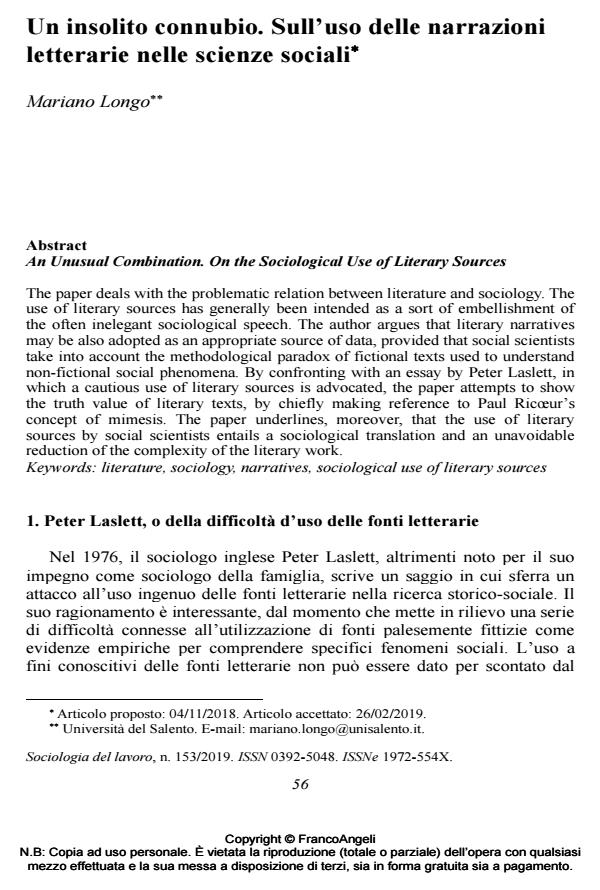An Unusual Combination. On the Sociological Use of Literary Sources
Journal title SOCIOLOGIA DEL LAVORO
Author/s Mariano Longo
Publishing Year 2019 Issue 2019/153
Language Italian Pages 20 P. 56-75 File size 278 KB
DOI 10.3280/SL2019-153004
DOI is like a bar code for intellectual property: to have more infomation
click here
Below, you can see the article first page
If you want to buy this article in PDF format, you can do it, following the instructions to buy download credits

FrancoAngeli is member of Publishers International Linking Association, Inc (PILA), a not-for-profit association which run the CrossRef service enabling links to and from online scholarly content.
The paper deals with the problematic relation between literature and sociology. The use of literary sources has generally been intended as a sort of embellishment of the often inelegant sociological speech. The author argues that literary narratives may be also adopted as an appropriate source of data, provided that social scientists take into account the methodological paradox of fictional texts used to understand non-fictional social phenomena. By confronting with an essay by Peter Laslett, in which a cautious use of literary sources is advocated, the paper attempts to show the truth value of literary texts, by chiefly making reference to Paul Ricoeur’s concept of mimesis. The paper underlines, moreover, that the use of literary sources by social scientists entails a sociological translation and an unavoidable reduction of the complexity of the literary work.
Keywords: literature, sociology, narratives, sociological use of literary sources
- A Job Satisfaction Structural Equation Model Obtained Combining Rasch Analysis and Generalized Maximum Entropy Estimation Enrico Ciavolino, Maurizio Carpita, Amjad Al-Nasser, in SSRN Electronic Journal /2012
DOI: 10.2139/ssrn.1993102
Mariano Longo, Un insolito connubio. Sull’uso delle narrazioni letterarie nelle scienze sociali in "SOCIOLOGIA DEL LAVORO " 153/2019, pp 56-75, DOI: 10.3280/SL2019-153004